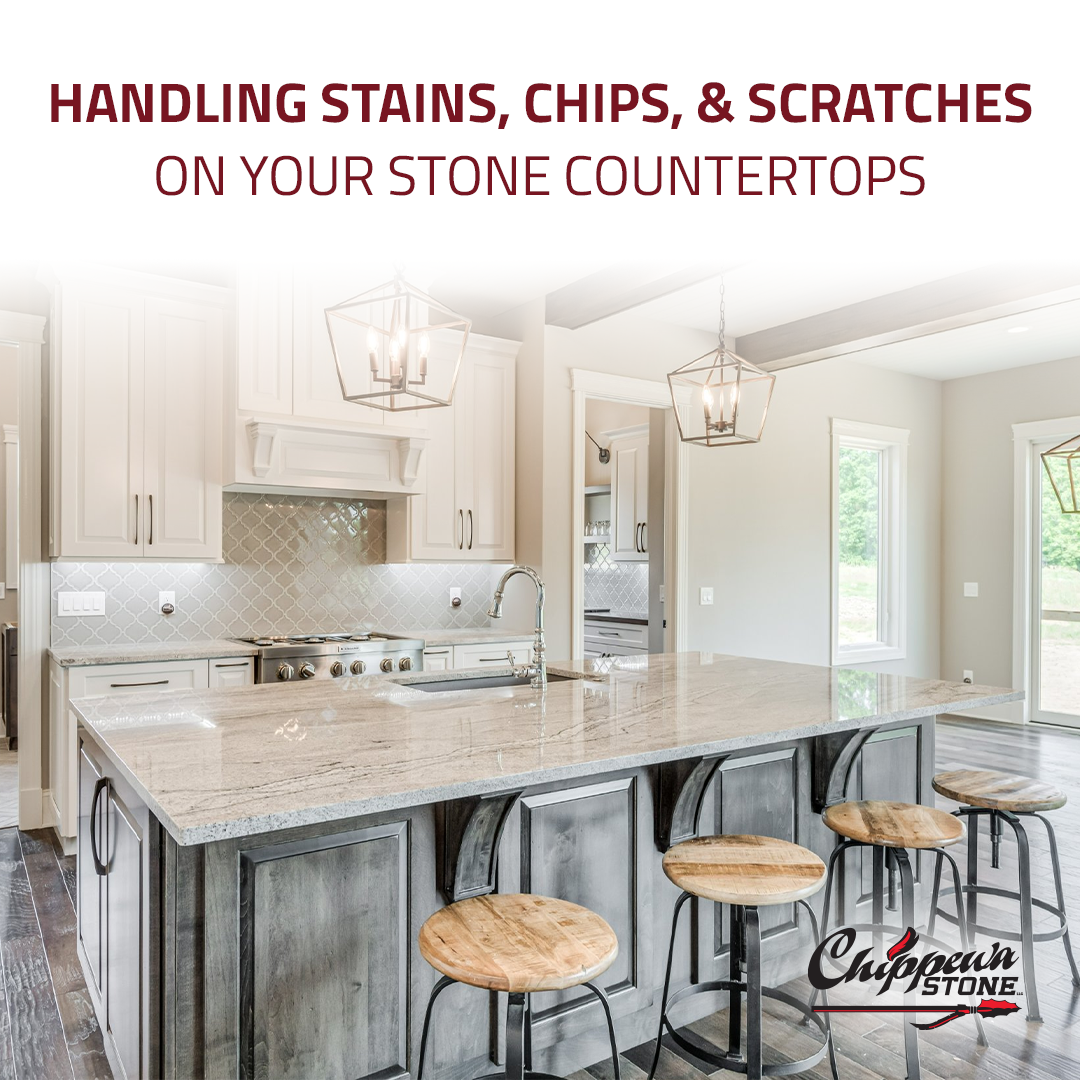Stone countertops are a beautiful and durable addition to any home, offering a timeless aesthetic and a robust surface for daily use. However, even the toughest natural stones like granite, quartzite, and marble can encounter minor issues over time, such as stains, chips, and scratches. The good news is that with proper care and the right techniques, these problems can often be remedied, leaving your countertops looking as good as new. Here, we’ll walk you through how to handle these common issues and maintain the stunning appeal of your stone countertops.
Understanding the Nature of Natural Stone
Before diving into specific solutions, it’s essential to understand the unique characteristics of natural stone. Each type of stone has its own composition and properties that affect its resistance to damage:
- Granite: One of the hardest natural stones, granite is highly durable and resistant to scratches and stains. However, it still requires sealing to prevent porous areas from absorbing liquids.
- Marble: Known for its elegance, marble is softer and more porous than granite, making it more susceptible to etching, staining, and scratches.
- Quartzite: Often mistaken for quartz, quartzite is a natural stone that offers exceptional durability and resistance to scratches but still benefits from sealing to prevent staining.
- Soapstone: Non-porous and highly resistant to stains, soapstone is softer than other stones, making it more prone to scratches.
By understanding the unique properties of your stone, you’ll be better equipped to care for it properly.
1. Tackling Stains on Your Stone Countertops
Common Causes of Stains
Stains on natural stone typically occur when liquids are left to sit on the surface, seeping into the stone’s pores. Common culprits include:
- Red wine
- Coffee and tea
- Oil-based substances
- Acidic liquids like lemon juice or vinegar
How to Remove Stains
- Identify the Type of Stain: The first step is determining whether the stain is oil-based, water-based, or caused by an acidic substance. Each type requires a different approach.
- Use a Poultice: For stubborn stains, create a poultice using baking soda and water (for oil-based stains) or baking soda and hydrogen peroxide (for water-based stains). Apply the poultice to the stain, cover it with plastic wrap, and let it sit for 24-48 hours. Then, wipe it off and clean the area with a damp cloth.
- Clean Regularly: To prevent future stains, clean your countertops daily using a pH-balanced stone cleaner and avoid using harsh chemicals that can damage the sealant.
Prevention Tips
- Wipe up spills immediately to prevent liquids from seeping into the stone.
- Use coasters under glasses and bottles, especially with acidic or colored liquids.
- Seal your countertops regularly to enhance their stain resistance.
2. Repairing Chips on Your Stone Countertops
Why Chips Happen
Chips are often the result of heavy impacts, such as dropping a heavy pot or pan on the surface. They are most common along edges and corners, where the stone is thinnest.
Steps to Fix Chips
- Clean the Area: Before making any repairs, clean the chipped area with a mild stone cleaner and ensure it is completely dry.
- Use an Epoxy or Resin Filler: For small chips, a clear or colored epoxy can be used to fill the damaged area. Apply the epoxy carefully, smoothing it out to match the surrounding surface. Allow it to cure as per the manufacturer’s instructions.
- Polish the Surface: Once the epoxy has cured, use fine sandpaper or a polishing pad to smooth the area and restore its shine.
- Call a Professional for Large Chips: If the damage is extensive, it’s best to contact a professional stone fabricator, such as Chippewa Stone, to repair the countertop seamlessly.
Prevention Tips
- Use cutting boards and trivets to avoid heavy impacts on the surface.
- Be cautious when handling heavy kitchenware near the edges of your countertops.
3. Addressing Scratches on Your Stone Countertops
Why Scratches Occur
Scratches can result from dragging heavy or sharp objects across the countertop. Softer stones like marble and soapstone are particularly prone to this type of damage.
How to Fix Scratches
- Buff Out Minor Scratches: For light scratches, use a fine-grit sandpaper or a buffing pad. Rub the scratched area gently in a circular motion until the scratch is no longer visible. Clean the area afterward with a damp cloth.
- Use a Stone Polishing Powder: Apply a polishing powder designed for natural stone to the scratched area. Follow the product’s instructions for the best results.
- Seal the Surface: After fixing the scratch, reseal the countertop to protect it from further damage.
- Seek Professional Help for Deep Scratches: For deeper scratches, consult a professional. They have the tools and expertise to restore your countertop to its original condition.
Prevention Tips
- Avoid cutting directly on the countertop; always use a cutting board.
- Lift objects instead of dragging them across the surface.
- Use protective pads under heavy appliances or decorative items.
4. General Maintenance Tips for Long-Lasting Beauty
Keeping your stone countertops in pristine condition requires regular maintenance. Here are some essential tips:
Sealing Your Countertops
Sealing is one of the most critical steps in maintaining natural stone. At Chippewa Stone, we apply a 15-year sealant during installation to provide long-lasting protection. However, depending on the type of stone and usage, you may need to reseal periodically. Perform a simple water test to determine if it’s time for resealing: If water droplets soak into the surface instead of beading up, it’s time to reapply a sealant.
Daily Cleaning
- Use a soft cloth or sponge with a pH-balanced stone cleaner for everyday cleaning.
- Avoid acidic or abrasive cleaners that can damage the sealant or etch the stone.
Avoid Harsh Chemicals
Substances like bleach, ammonia, and vinegar can harm your countertops. Stick to products specifically designed for natural stone.
Protect Your Countertops
- Use trivets or hot pads under hot cookware to prevent thermal shock.
- Place coasters under glasses to avoid water rings and stains.
When to Call a Professional
While many minor issues can be resolved with DIY techniques, some situations require professional intervention:
- Large chips or deep scratches that compromise the structural integrity of the stone.
- Persistent stains that do not respond to standard cleaning methods.
- Resealing services to ensure comprehensive protection.
Final Thoughts
Natural stone countertops are a stunning and durable investment, but like any surface, they can experience wear and tear over time. By understanding how to handle stains, chips, and scratches, you can keep your countertops looking beautiful and functional. Remember, proper care and regular maintenance go a long way in preserving the natural beauty of your stone.
If you’re considering new stone countertops or need assistance with repairs, Chippewa Stone is here to help. Visit our website or stop by our showroom to explore our wide selection of natural stone and learn more about our expert services. With the right care and support, your stone countertops will remain a centerpiece in your home for years to come.








